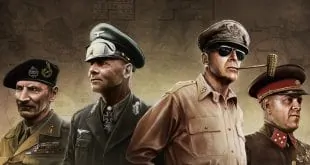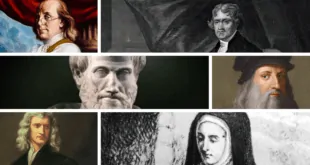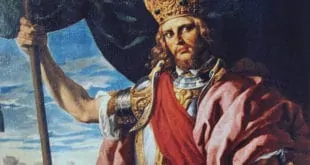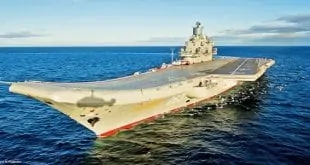Also known as Vlad Tepes, Vlad III or Vlad Dracula, he was Vlad II Dracul and a member of the Order of the Dragon. Regarded as sadistic by foreigners, he was, in fact, a saviour for the Romanians and Bulgarians during the Ottoman conquest of the Balkans.
He was only nicknamed “the Impaler” after his death, owning it to his unique reputation of impaling his enemies and engaging in acts of extreme cruelty.
These ten facts about Vlad the Impaler will help you understand how he became so well known, and his reasons for torturing his enemies.
1. A brief history
Born in 1431 in Transylvania, Vlad the Impaler lived for 45 years. During this time he was Prince of Wallachia three times, under the title of Voivode of Wallachia. He always was courageous in battle and never shied away from confronting his enemy head-on.
He was killed in battle by decapitation, and the Turks kept his head as a trophy, even displaying it on a stake to prove he was dead.
2. The BRAM STOKER affair
Stoker published “Dracula” in 1897 and used Vlad’s name for the title. Stoker got the idea for his book from his Hungarian friend who was a history professor.
The book is about Count Dracula, the vampire who plans to move to England searching for new blood. This work of fiction contains some historical references. Stoker set his character in Transylvania, North from Wallachia, where Vlad the Impaler only fleetingly set foot.
3. His sadistic side
Vlad Tepes remained known for his method of impaling his enemies to condemn injustice and as a display of power.
He used to stick the stoke through their torsos and erected the stokes in the ground. This did not kill the victims at once, and at times they were left in agony for days on end. Vlad III applied this punishment to thousands of prisoners at once, impaling them either vertically or horizontally.
4. It was a family business
Born in Sighisoara, Vlad the Impaler was Vlad II Dracul also known as Vlad the Dragon, or Vlad the Devil. This is how Vlad Tepes got to be dubbed of “son of the dragon” and afterwards “son of the devil”.
Vlad learned combat skills, science and geography early on with Greek scholars while living in Targoviste with his brother, Radu III the Handsome. He received a careful education and got to learn Old Church Slavonic, German and Latin.
5. Strategic abilities
But when the Moldavian leader was killed, Vlad turned to the Hungarians for help and became an adviser for John Hunyadi. Vlad managed to claim Wallachia once again after he killed Vladislav II in personal combat.
6. Justice above everything
During his second reign as a Prince, Vlad took an interest in the agricultural economy and the military forces flourished under his command. He was ruthless with thieves and the boyars he suspected were making alliances with Hungary, and he rid the cities of beggars.
7. Local trade
At the same time, Vlad Dracul limited foreign trade to help local merchants and trade. He focused on building new villages and encouraged local merchants to strengthen their businesses. He is remembered as an advocate for justice and integrity.
8. He was betrayed and paid a heavy price
In his attempt to defeat the Ottomans, Vlad the Impaler was betrayed by Corvinus who blamed him for making victory impossible.
As a consequence, Vlad spent twelve years in prison in Hungary. Meanwhile, his brother, Radu III the Handsome, was the Ottoman Empire’s puppet, ruling in Wallachia.
Some other sources say Vlad the Impaler, was purportedly imprisoned in Castle Corvin by Hungarian Gov.
9. Legacy
His first wife’s identity is still unknown, but it is assumed that she may have been a Transylvanian countess. She bore his son and heir, Mihnea cel Rau. After his first marriage, he spent some time imprisoned in Hungary, where he met Ilona Szilagyi, the daughter of a Hungarian noble. She later became his wife and bore him two sons.
While Germanic documents tell us about a tyrant, monstrous, cruel Vlad, Romanians still see him as a good leader who fought for justice in an attempt to remove corrupt boyars from high seats.
10. Vampirism
Bram Stoker made the association between Vlad Tepes and vampirism. Since then, stories about vampire mythology have been flourishing.
More than 200 movies were made featuring count Dracula, more than any other historical figure. Dracula and the legend of Transylvania have become almost synonymous with vampires. However, the truth is that the word derives from the Serbian “vampyr”.
But in reality, Vlad the Impaler did not fly away from his castle to suck his enemies’ blood. He did not keep fresh bodies at hand to have something to snack on. He just impaled his enemies.
Despite his brutality, Dracula was a religious count who surrounded himself with monks and priests throughout his life. He founded five monasteries, while his family founded over fifty monasteries during 150 years.
Image sources: [1], [2], [3], [4], [5], [6], [7], [8], [9], [10]
 The Education Network Best Ten List Articles
The Education Network Best Ten List Articles
![Dracula, Vlad The Impaler [10 Less Known Facts]](http://ten.info/wp-content/uploads/Vlad-The-Impaler-500x330.jpg)




![Vlad the Impaler [Dracula] Strategic abilities](http://ten.info/wp-content/uploads/Vlad-the-Impaler-Dracula-Strategic-abilities.webp)













